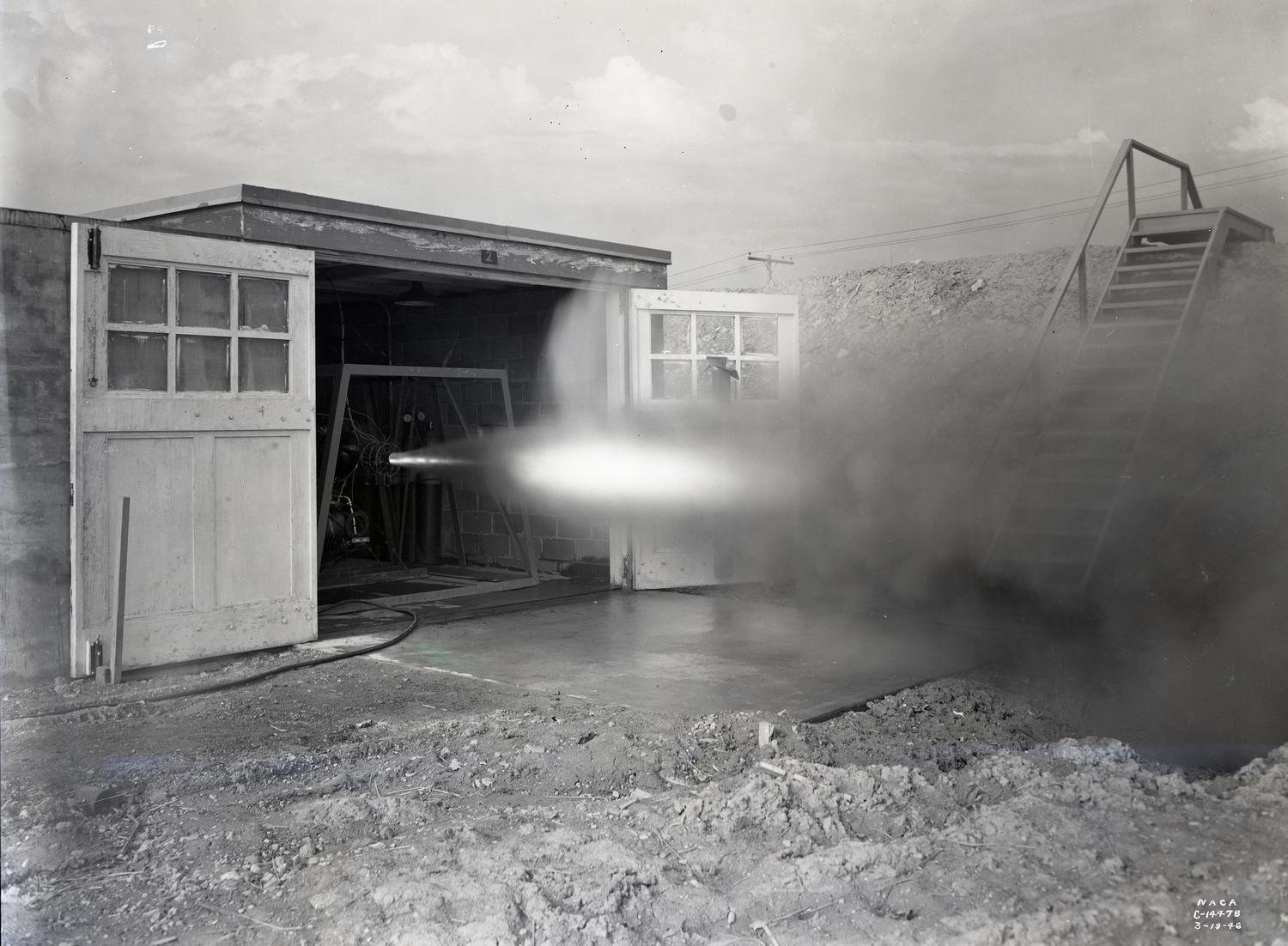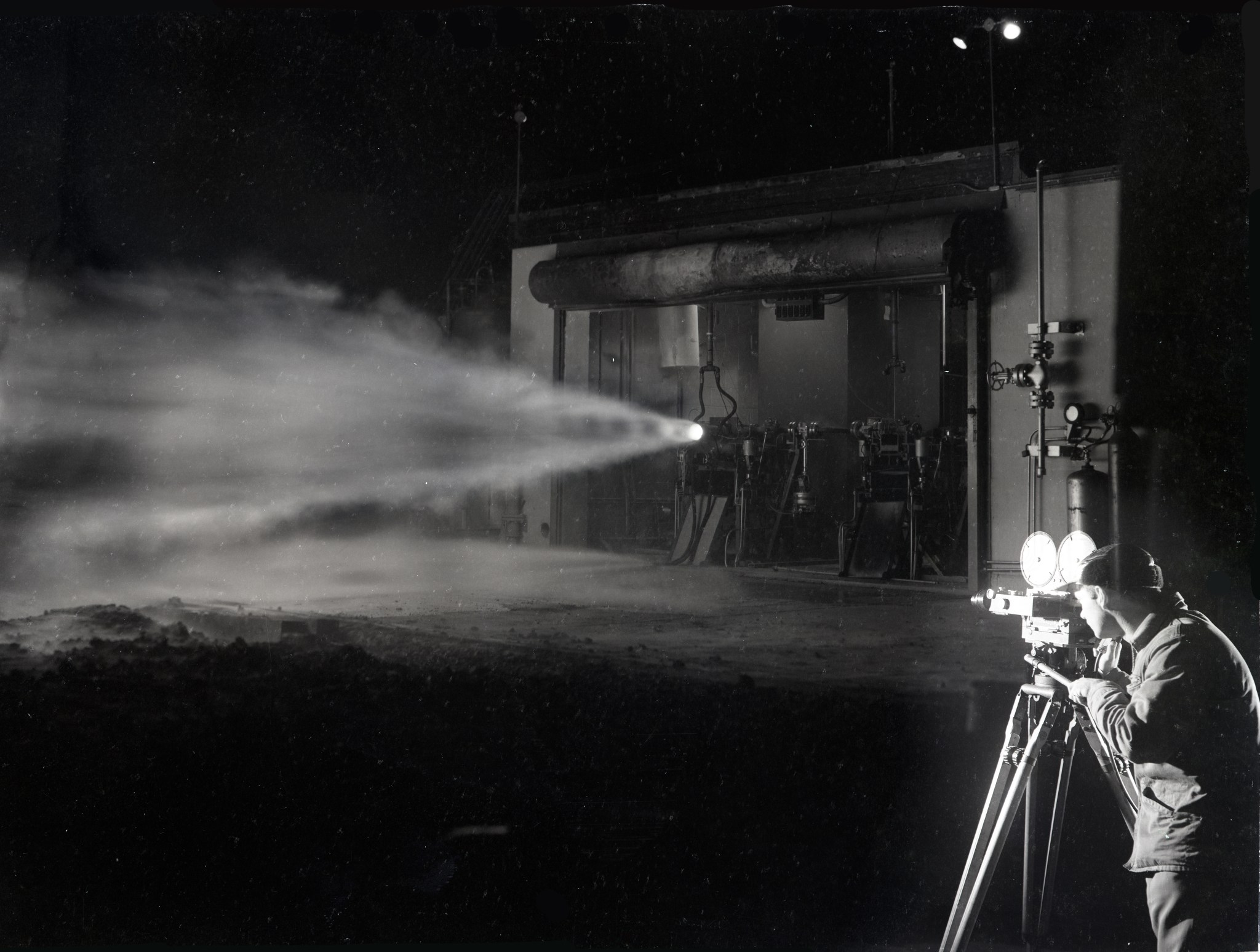With little fanfare, in June 1945 fuels researchers began testing small, experimental rocket engines in simple cinder block test cells at the far end of what is today the NASA Glenn Research Center. Over the years, the facility, which was known as the Rocket Laboratory*, expanded both its physical size and the types of engines tested. For nearly 75 years, the Rocket Lab provided researchers with an adaptable resource for testing an array of propulsion systems and propellants.
Initially, the Rocket Lab was used to study jet-assisted takeoff (JATO) rocket engines that provided a boost to military aircraft during takeoff or combat conditions. This photograph shows the firing of a nitric acid and aniline-fueled JATO engine in Cell 13 at the Rocket Lab in March 1946.
By the late-1940s, researchers were using the Rocket Lab test cells to evaluate combinations of various non-traditional, high-energy propellants. They weighed the high reaction rates against issues such as toxicity and ease of handling. This testing of high-energy liquid propellants in the 1950s was a key factor in NASA’s decision to use liquid hydrogen in the Saturn and Centaur launch vehicles.
Here, a photographer films the test of a 5,000-pound thrust liquid-hydrogen/liquid-oxygen rocket engine in Cell 22 of the Rocket Lab. It was a follow up run to the laboratory’s first successful hydrogen-oxygen test several weeks before.
Once the space program was underway, research at the Rocket Lab shifted away from high-energy fuels to small thrusters for spacecraft control as well as cooling systems for rocket engine nozzles. By the 1970s, the Rocket Lab was also used for aeronautic research such as clean combustors for aircraft engines and alternative methods for burning fossil fuels, such as the Magneto Hydrodynamic rig seen in this 1974 photograph.
The Rocket Lab was reborn in the 1980s and 1990s with major upgrades to several of the test cells including the addition of laser diagnostic systems, such as the one this technician tested in 1990. It also supported a wide range of testing during this period including combustors, rocket ignition, novel fuels, high-temperature materials, and various types of thrusters.
The Rocket Lab, seen here in 2006, remained active throughout the 2000s, studying new technologies such as “green” propellants and low-cost injectors. Prior to its demolition in 2021, elements from the Rocket Lab’s various test cells were combined into Cell 32.
* The name of the facility changed over the years but was referred to as the Rocket Lab throughout. It was the High-Pressure Combustion Laboratory (1945-1950), the Rocket Laboratory (1950-1981), the Combustion Research Laboratory (1981-1989), the Rocket Laboratories (1989-1996), and the Research Combustion Laboratory (1996-2020).
Robert S. Arrighi
NASA Glenn Research Center

































